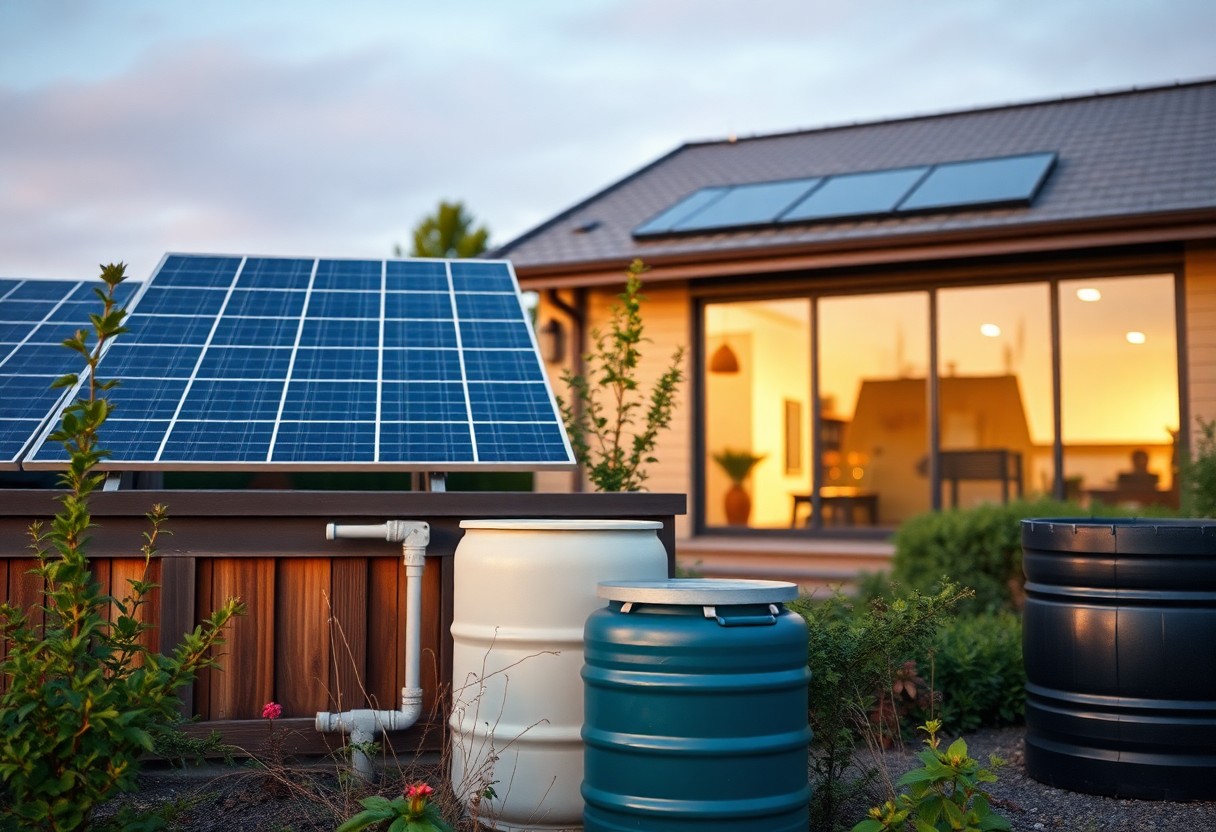Many people struggle to maintain their energy throughout the day, often feeling overwhelmed and fatigued. Implementing simple systems can help you enhance your productivity and vitality. By adopting effective strategies in time management and creating a balanced daily routine, you can optimize your physical and mental stamina. Discover how small changes in your habits can lead to significant improvements in overall energy levels, enabling you to tackle challenges with greater focus and enthusiasm.
Understanding Energy Management
The Importance of Energy Management
Effective energy management is vital for maximizing your productivity and well-being. When you actively manage your energy, you become more aware of your energy levels throughout the day, enabling you to allocate your most impactful tasks to periods of peak performance. This practice not only enhances your output but also contributes to a healthier work-life balance, reducing feelings of stress and burnout.
Moreover, understanding your personal energy patterns empowers you to make informed decisions that lead to greater satisfaction in your daily activities. By cultivating an awareness of your energy sources—from nutrition to sleep—you can optimize how you approach both work and leisure, ultimately improving your overall quality of life.
Key Concepts in Energy Management
Energy management hinges on a few foundational concepts, such as self-awareness, energy allocation, and recovery techniques. Self-awareness involves recognizing your natural energy cycles and identifying tasks that drain or rejuvenate you. By strategically planning your day around these cycles, you can boost your productivity and minimize fatigue.
A key component is energy allocation, which refers to the practice of dedicating specific blocks of time for high-concentration tasks based on when you feel the most alert. Recovery techniques, including short breaks and mindful activities, help replenish your energy reserves and sustain your performance over long periods.
Understanding how to leverage these key concepts can lead to significant improvements in your efficiency and overall health. Aim to incorporate practices that align your tasks with your energy highs and lows, ensuring a balanced approach to your daily obligations.
Types of Energy Management Systems
Energy management systems can vary widely, but they typically fall into several categories. Examples include personal energy journals, digital tracking apps, and structured frameworks, each designed to help you monitor, analyze, and enhance your energy usage effectively. Personal energy journals allow for reflective practices that identify triggers and patterns, while digital apps can provide immediate insights into your energy metrics.
Structured frameworks often combine planning tools with psychological strategies to optimize both physical and mental energy. By exploring different types of systems, you can find one that resonates with your unique lifestyle and preferences, further enhancing your effectiveness in managing energy.
| Type | Description |
| Personal Energy Journals | Tools for reflecting on energy patterns and triggers. |
| Digital Tracking Apps | Real-time insights and monitoring of energy levels. |
| Structured Frameworks | Combination of tools and strategies for managing energy. |
| Workplace Energy Programs | Initiatives aimed at optimizing team energy and productivity. |
| Personalized Coaching | Guidance for developing tailored energy management strategies. |
Exploring various energy management systems is imperative to tailor a solution that fits your specific needs and aids in effective energy tracking. Thou, this process will lead to a more sustainable approach to maintaining your energy levels throughout daily life.
- Energy Journals
- Tracking Apps
- Structured Frameworks
- Workplace Programs
- Personal Coaching
Thou, adopting one or more of these systems can significantly enhance your ability to manage and optimize your energy levels effectively.
Assessing Your Energy Needs
Identifying Energy Consumption Patterns
To effectively manage your energy, start by identifying your energy consumption patterns. Track your daily activities and note when you feel most energized and when your energy dips. For example, you might notice that your energy peaks in the morning and declines after lunch. This understanding allows you to align your most demanding tasks with your high-energy times, optimizing your output and reducing moments of fatigue.
Utilize methods like journaling or digital tracking tools to keep tabs on your energy levels across different activities. By categorizing tasks as high, medium, or low energy, you can create a visual representation of your energy distribution throughout the day, helping you adjust your schedule to accommodate your natural rhythms.
Setting Energy Goals and Objectives
Defining clear energy goals is vital for maintaining consistent productivity. Start by pinpointing what you want to achieve with your energy management. For instance, you might aim to increase your focused working hours or reduce feelings of burnout. Setting specific, measurable goals will help you stay accountable to your energy management strategies and track your progress over time.
Consider breaking your overarching energy goals into smaller, actionable objectives. These could include implementing regular breaks, practicing mindfulness techniques, or reducing caffeine intake in the afternoons. Regularly revisiting and adjusting these goals based on your experiences encourages continuous improvement in your energy management approach.
By setting achievable milestones, you not only increase your productivity but also create a sustainable energy balance. Your objectives provide a roadmap to follow, ensuring you remain focused on enhancing your energy levels in a structured way.
Understanding Energy Sources
Your energy derives from various sources, both internal and external. Internally, factors such as sleep quality, nutrition, and hydration significantly influence your energy levels. For example, consuming balanced meals rich in whole foods can provide a lasting energy supply, while processed foods may lead to energy crashes. Externally, environmental elements like light, temperature, and sound also play pivotal roles in shaping your energy experience.
Pay attention to your lifestyle choices; these directly impact your energy availability. Incorporating physical activity and routine sleep schedules facilitates overall well-being, accentuating your energy levels throughout the day. Additionally, fostering a conducive working environment—such as adequate lighting and minimal distractions—can further enhance your focus and productivity.
Understanding the myriad of influences on your energy can empower you to make informed choices. By adjusting your diet, lifestyle, and surroundings, you can cultivate a more dependable energy reservoir to draw from daily.

Simple Energy Management Techniques
Time Management for Energy Efficiency
Effective time management can significantly enhance your energy levels throughout the day. By organizing your schedule to include focused work periods followed by short breaks, you can prevent fatigue from prolonged task engagement. Techniques like the Pomodoro Technique, which involves working for 25 minutes followed by a 5-minute break, help maintain your concentration and energy without overwhelming you. Implementing a time blocking system allows you to allocate specific periods for tasks, preventing the mental fatigue that comes from multitasking.
Assessing your peak productivity times is also imperative. Observe when your energy levels are highest during the day, and prioritize demanding tasks for those periods. You might find that you work best in the morning, while a colleague thrives later in the day. Tailoring your schedule to fit your natural rhythms can lead to more effective energy usage, helping you accomplish more with less effort.
Meal Planning and Prep to Optimize Energy
Meal planning and preparation play a pivotal role in managing your energy levels. When you plan your meals ahead and prepare them in advance, you eliminate the stress of deciding what to eat in the moment, which can drain your energy. Focus on balancing your meals with complex carbohydrates, lean proteins, and plenty of fruits and vegetables. This balance ensures a steady release of energy throughout the day, rather than the spikes and crashes associated with high-sugar or processed foods.
Additionally, consider batch cooking to streamline your weekly meal prep. For instance, cooking a large pot of quinoa, roasting a variety of vegetables, or preparing a protein-rich dish in advance allows you to assemble nutritious meals quickly during busy days. This strategy not only saves time but also helps maintain your energy levels by providing healthy options readily available when hunger strikes.
For optimal energy, aim to include snacks in your meal planning. Nutritious snacks like nuts, yogurt, or hummus with vegetables can prevent your energy from dipping between meals, keeping you alert and focused.
Incorporating Rest and Recovery
Implementing structured rest and recovery periods into your routine is vital for sustaining your energy levels. You may underestimate the power of rest, but taking regular breaks and allowing time for recovery can enhance your performance significantly. Studies have shown that even short breaks can lead to increased productivity and improved overall well-being. Schedule moments throughout your day for deep breathing, stretching, or simply stepping away from your workspace to recharge your mind and body.
Additionally, prioritizing quality sleep each night cannot be overstated. Aim for at least 7-9 hours of sleep, as a well-rested body is more capable of managing stress and maintaining energy. Create a calming bedtime routine, such as reading or meditation, to signal to your body that it’s time to wind down, facilitating better sleep and enhanced energy the following day.

Technological Aids for Energy Management
Energy Monitoring Apps and Tools
Leveraging energy monitoring apps simplifies how you track and manage your energy consumption. Tools like EnergyHub or JouleBug provide real-time insights into your usage patterns, helping you identify which appliances consume the most energy. These apps allow you to set goals, receive notifications, and even suggest energy-saving practices based on your consumption history.
Some tools also integrate with your home’s energy meter, giving you more detailed data and analytics. For instance, Sense analyzes your electricity use by identifying each device’s usage, empowering you to make informed decisions about when to use certain appliances and highlighting opportunities for energy savings.
Wearable Technology for Energy Insights
Wearable devices are transforming how you understand your energy levels throughout the day. Smartwatches and fitness trackers like the Apple Watch or Fitbit not only monitor physical activity but also provide insights on your sleep patterns, heart rate, and overall wellness. Understanding these metrics can help you align your daily activities with your peak energy levels, optimizing productivity.
Incorporating this data allows you to identify when you’re most alert or fatigued, guiding you to schedule demanding tasks during high-energy periods. Furthermore, wearables equipped with health monitoring features assist in keeping your mental and emotional energy in check, prompting you to take necessary breaks or engage in mindfulness activities when stress levels rise.
Smart Home Devices and Automation
Smart home technology extends beyond convenience; it can significantly enhance your energy management. Devices like smart thermostats (e.g., Nest or Ecobee) adjust heating and cooling based on your habits and preferences, ensuring optimal energy consumption while maintaining comfort. Scheduling routines through these systems can also minimize energy waste during periods when you’re not at home.
Using smart plugs and outlets further empowers you to control when devices can consume energy, preventing unnecessary usage during off-peak hours or when devices are not in use. The integration of these devices leads to a comprehensive energy management strategy, reducing your bills and environmental footprint.
Creating and Maintaining Energy Management Routines
Establishing Daily Energy Management Habits
To maximize your energy throughout the day, it’s necessary to establish daily habits that align with your natural rhythms. Begin your mornings with a routine that includes activities such as light stretching, hydration, and a balanced breakfast. Studies show that individuals who start their day with a structured routine report higher energy levels and productivity. Incorporate short breaks throughout your workday to recharge, as even a few minutes away from your screen can significantly boost your focus and reduce fatigue.
Additionally, identify periods when you feel most energized and schedule your most demanding tasks during these windows. This method ensures that you’re working at your peak performance rather than struggling against fatigue. Use techniques like the Pomodoro Technique—25 minutes of focused work followed by a 5-minute break—to maintain energy without burnout. By consistently following these habits, you train your body and mind to optimize energy use effectively.
Weekly Reviewing and Adjusting Strategies
Setting aside time each week to review your energy management strategies can lead to lasting improvements. Use this time to assess what methods have been working well and where you might be experiencing energy drains. For instance, if you find your evenings are unproductive, consider analyzing your energy use throughout the day. This self-reflection will allow you to identify patterns and make necessary adjustments, such as shifting more demanding tasks to earlier in the week when your energy is higher.
Additionally, track your physical and mental well-being during the week. Consider journaling about your energy levels, stress triggers, and productivity. This practice not only helps you stay aligned with your energy management goals but also enables you to experiment with different techniques, such as adjusting your exercise routines or sleep patterns based on your findings. Adaptability is key, as it empowers you to refine your approach continuously.
Engaging in this weekly review reinforces your commitment to energy management and empowers you to adjust strategies based on your evolving needs. Fine-tuning your approach ensures that you maintain balance and peak performance while preventing energy burnout.
Long-Term Planning for Energy Sustainability
Long-term planning involves creating a sustainable energy management routine that evolves with you. Start by setting energy goals. These might include incorporating regular exercise, committing to sleep hygiene, or dedicating time to mindfulness practices. Each of these elements contributes to a holistic approach to your energy management. Understanding the balance between energy expenditure and restoration over time will help you avoid periods of depletion and invigorate your overall life quality.
Moreover, set milestones to reflect on and reward your progress. Utilizing tools like energy audits can help visualize your consumption patterns over months and years. These audits will highlight improvements and areas needing attention, reinforcing positive habits. Clarity in your long-term energy goals establishes a framework for sustainable practices that adapt to changes in lifestyle, work demands, and health conditions.
As you engage in long-term planning, actively seek feedback from your body and mind, allowing for adjustments in your practices. Embracing flexibility in your routines while remaining focused on your overarching goals will ensure continuous energy sustainability.
Overcoming Obstacles to Energy Management
Common Challenges in Energy Management
Managing your energy effectively often comes with several challenges that can derail your efforts. One common obstacle is procrastination, which leads to inconsistent energy monitoring and reduced motivation. You may intend to track your energy levels daily, but distractions or lack of immediate incentives might push this task to the back burner. Additionally, many find it difficult to maintain a routine due to external pressures such as work commitments or family obligations, making it seem impossible to prioritize energy management.
Another significant challenge is the overwhelming amount of information available on energy management techniques. With so many methods and tools at your disposal, you might feel overwhelmed by choices, leading to indecision and ultimately inaction. Coupled with self-doubt or fear of failure, these factors can prevent you from implementing effective strategies to optimize your energy levels.
Strategies for Staying Motivated
To overcome these challenges, establishing a clear set of goals can enhance your motivation in energy management. Start by defining specific objectives, such as reducing energy waste in your daily routine or improving sleep quality. By quantifying these goals, you can create a tangible benchmark to visualize your progress and maintain focus. Celebrating small achievements along the way helps reinforce a positive mindset and keeps you engaged in the process.
Incorporating energy management into your daily habits can also keep motivation high. Utilize tools like timers for work sessions and break periods or set reminders to assess your energy levels throughout the day. The more you treat energy management as an integral part of your routine rather than a chore, the easier it will become to maintain momentum and responsibility toward your energy goals.
Seeking Support and Resources
Finding support—whether from friends, family, or online communities—can be pivotal in your quest to manage energy effectively. Engaging with others on similar journeys can provide a sense of accountability, helping you to stay committed. You might also consider joining forums or social media groups dedicated to energy management, where participants share tips, strategies, and personal experiences that can motivate and inspire you.
Additionally, leveraging resources such as workshops, webinars, or books about energy optimization can introduce you to new concepts and practices. Many local organizations offer classes that provide not only valuable techniques but also networking opportunities. By investing in your education and surrounding yourself with knowledgeable individuals, you’ll be better equipped to tackle the challenges you face in energy management.
Final Words
So, managing your energy effectively requires adopting simple systems tailored to your specific needs. By integrating practices such as setting clear priorities, scheduling rest periods, and employing time management techniques, you can enhance your focus and productivity. Consistently evaluating and adjusting your strategies will ensure that you remain engaged and energized throughout your day.
Moreover, embracing a balanced approach that combines physical activity, proper nutrition, and mindfulness can significantly improve your overall energy levels. By taking these steps, you empower yourself to optimize performance, reduce fatigue, and maintain a sustainable lifestyle. Ultimately, your commitment to these systems can lead to lasting improvements in how you manage your energy and achieve your goals.
FAQ
Q: What are simple systems to manage my energy levels?
A: Simple systems include setting a consistent sleep schedule, maintaining a balanced diet, and incorporating regular physical activity. These systems help stabilize energy levels throughout the day.
Q: How can I effectively track my energy fluctuations?
A: You can track energy fluctuations by maintaining a daily energy journal. Record your energy levels at different times, along with activities and meals, to identify patterns and triggers.
Q: What role does hydration play in energy management?
A: Hydration is vital for maintaining optimal energy levels. Dehydration can lead to fatigue and decreased performance. Aim to drink adequate water daily, adjusting based on activity level and climate.



